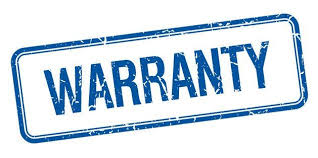Special Characteristics

“When God puts that special someone in your life, you better not let that person go”
Everyone has their favourites. We may like a particular actor, sportsman, teacher, restaurant, politician (although all are equally bad!). Why do we like it? Because there is some uniqueness in them, which makes them apart from the rest.
Something similar is related to any product or manufacturing process. If one or two key characteristics falters, the entire process/product fails. Like Brakes in the car, Fizz in the Coca Cola, Sound of Bullet Motorcycle, Sweetness in the ice-cream, Physique of Sylvester Stallone.
As per IATF 16949 Standard definition, clause 3.1,
Special characteristic: classification of a product characteristic or manufacturing process parameter that can affect safety or compliance with regulations, fit, function, performance requirements or subsequent processing of the product.
Following are the clauses of IATF 16949 where the reference of Special Characteristics is specified.
| Requirement | Clause |
| Organizational Roles, responsibilities and Authorities | 5.3.1 |
| Measurement System Analysis | 7.1.5.1.1 |
| Product Design Input | 8.3.3.1 |
| Manufacturing Process Design Inputs | 8.3.3.2 |
| Design and Development output | 8.3.5.1 |
| Manufacturing process design output | 8.3.5.2 |
| Information for external provider | 8.4.3.1 |
| Control Plan | 8.5.5.1 |
| Monitoring and measurement of manufacturing process | 9.1.1.1 |
IATF subscribing OEM’s have specified some requirements related to Special Characteristics
| BMW, Renault | Not Specified |
| Daimler | MBST 13/18, section 5, paragraph 8 MBST 14/06, section 5, paragraph 3 + 6 + 7 |
| FCA, USA | As per CEP12679. |
| FCA, Italy | 9.01102 9.01102/10 9.01120 SQ.00010 FPW.IFN053 (CSR Powertrain) Report Characteristics Manual (LATAM suppliers) |
| Ford | Critical Characteristics (CC), Significant Characteristics (SC), High Impact Characteristics (HI), Operator Safety Characteristics (OS): As per Ford FMEA Handbook |
| GM | As per Key Characteristic Designation System Process GMW15049 |
| Peugeot | Safety characteristic – Regulatory characteristic – Safety and regulatory characteristic: Essential Monitored Characteristics |
| VW | D/TLD-Parts; Formel-Q- Capability Appendix |
As per IATF 16949 Clause 8.2.3.1.2 and 8.3.3.3, following are the key points & related industry challenges.
- CFT approach: The identification of special characteristics is done by participants from different processes like New Product Development, Marketing, Production, Purchase, Quality etc. The intent is to include inputs from different process owners.
- Industry Challenge: In many organizations, the special characteristics are identified by Design process only. The importance of involving other process owners is not considered. Many times, ONE design engineer prepares FMEA based on his/her past experience!
- Customer defined: For non-Design manufacturing organization, generally, product characteristics are identified by Customer. The organization has to define special characteristic related to Process so that product characteristic can be ensured. In a few cases, even when the organization is design responsible, the customer (OEM) do propose few product-related characteristics.
- Industry Challenge: In many organizations, customer-defined special characteristics are not given the importance which sometimes results in rejection / Warranty. Without defining special characteristic for the process, how can an organization ensure compliance to Product characteristic?
- Risk Analysis (FMEA) by Organization: Based on the risk analysis (generally in the form of FMEA), the organization identifies process-related special characteristics like Torque, Pressure, Temperature etc.
- Industry Challenge: Many of the organization do not identify any special characteristics as they fear that they have to apply additional controls. But, is it possible for any organization to produce a good quality product without identifying any special characteristics related to the process?
- Documentation: The organization must ensure that product & process characteristics identified through drawing and FMEA are identified in all subsequent documents like PFMEA, Control Plan, Work instruction, Process sheet etc. If relevant, these special characteristics need to be communicated to suppliers and their sub-suppliers too.
- Industry challenge: Very few organizations communicate special characteristics to their suppliers. It is commonly observed that special characteristics are identified till the PFMEA and control plan. It does not cascade to other documents like Operator instruction or process sheet. The real intent of special characteristic is to communicate to the operator who is actually ensuring its implementation but…
- Special Marking: Different customers have their own symbols for identifying special characteristics. The basic symbols are Critical (Cr), Major (Mj) and Minor (Mi). Critical is related to safety and regulation. Major is related to Fitment, Dimension and appearance. While Minor covers all the remaining.
- Industry Challenge: In the shop floor, the majority of the relevant operators are NOT aware of these symbols and they are the REAL people who have to understand and ensure its implementation! Moreover, different symbols are used for the same characteristics in DFMEA, PFMEA, Control Plan and work instruction.
- Control & Monitoring: For each special characteristic, the organization has to define controls (Poka Yoke, SPC, 100% inspection) which should be stringent from the normal controls. Also, the monitoring mechanism (Sample size, frequency of inspection) should be relevant to the seriousness of the characteristic.
- Industry Challenge: In the majority of the control plan, controls and monitoring remain the same irrespective of the characteristics like Critical, Major or Minor. It shows the understanding of the team who prepares the FMEA and control plan!
- Customer defined symbol or equivalent: If an organization is supplying to different OEMs like VW, Ford, Suzuki, M & M, Hero MotoCorp, Bajaj, TVS, they may have their own symbols for the same characteristic like Critical (Cr, CC, V, SC). It may be confusing for the users in the organization. In such cases, an organization can create their own symbols which may be equivalent to different customers. This matrix can be shared with customers for their approval (although still few customers do insist to follow their symbols only!).
- Industry Challenge: Customer approval for an alternate symbol is hardly evident. Organizations use a different type of symbol for the same type of characteristic and it creates confusion for the user especially operators.
The best type of control method is dependent on the manufacturing process for that characteristic. Processes may be classified as setup-dominant, operator-dominant, fixture-dominant, etc. A first part inspection may be a good choice for a setup-dominant process, but a bad choice for an operator-dominant process.
| Dominant Factor | Requirement | Manufacturing Process | Process Control | Product Control |
| Man-Operator | Dependent on operator knowledge | Manual Soldering, Painting, brazing Packaging | Operator Qualification, Skill Matrix | Check sheet |
| Machine | Machine parameter impacts process output | Volume/Weight fill packaging | Self-Stopping machine | Online Measurement, Poka Yoke, Control chart |
| Material | Characteristic of material impact process and Product quality | Banbury in Tyre Manufacturing | Bar code identification | Lab testing of First sample |
| Method- Setup | Process is stable, capable & repeatable | Moulding, Welding, Fabrication, Heat Treatment process | Job setup verification | First piece inspection, Control Chart |
Benefits to Customer:
- Good Quality product
- Compliance to their requirement
- Safety & regulatory requirements are fulfilled
Some question to ponder:
- How can an organization prepare PFMEA without identifying any Special Characteristics? It means nothing is important in the organization manufacturing process to produce a good quality product!
- Why there is so much resistance in the organization to identify any special Characteristics?
- In Control pan, why measurement controls (like Sample Size, monitoring frequency) remains the same for special characteristic as well as for other processes/product parameters?
References:
ISO 9000: 2015
ISO 9001: 2015
IATF 16949: 2016
Customer Specific Requirements (CSR)
VDA: Volume Special Characteristics (SC)
This is the 35th article of this Quality Management series. Every weekend, you will find useful information which will make your Management System journey Productive. Please share it with your colleagues too. Your genuine feedback and response are extremely valuable.





Impressive